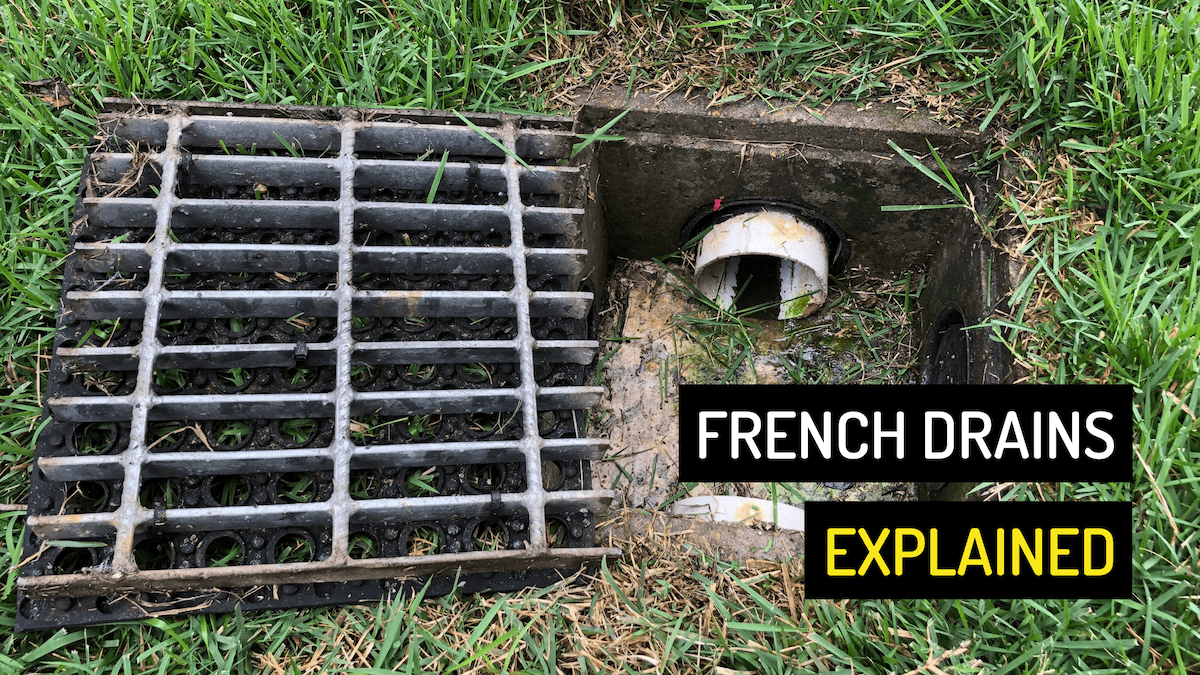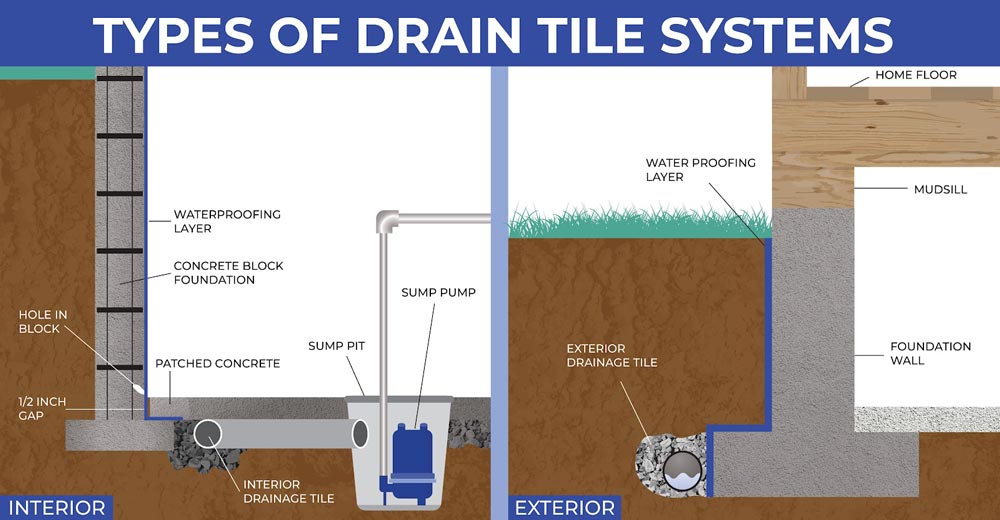How a Portland French Drain Elevates Your Yard Design
How a Portland French Drain Elevates Your Yard Design
Blog Article
The Necessary Overview to Keeping Your French Drainpipe for Resilient Efficiency
Maintaining your French drainpipe is crucial to its performance and your building's security. Normal checks can save you from pricey fixings and water damage. You'll would like to know what indications to try to find and just how commonly to inspect your system. And also, understanding the cleaning procedure can make a substantial distinction. Allow's check out the essential actions for ensuring your drain functions well for many years to find.
Comprehending the Function of a French Drainpipe
A French drainpipe is a crucial element in managing water around your home. It guides excess water far from your structure, protecting against flooding and damages. When hefty rain drops, the drain accumulates water with a perforated pipeline buried in gravel. This system permits water to stream openly, minimizing stress on your basement walls and minimizing the danger of leaks.You could wonder how it operates in method. As water saturates the soil, gravity draws it towards the drainpipe. The perforated pipeline captures this water, transferring it to a marked drain location or tornado sewage system. This process maintains your yard dry and shields your home's architectural integrity.Understanding how a French drain features is essential to appreciating its importance. By efficiently channeling water away, it helps preserve a dry and secure living environment. So, maintaining your French drainpipe in top condition assurances you prevent pricey repairs down the line.
Routine Inspections: What to Search for
Begin by inspecting for any blockages that might be obstructing water circulation when you're examining your French drainpipe. Pay focus to indicators of surface area erosion around the drain, as this can show potential issues. Normal evaluations will help keep your drain system operating efficiently.
Blocked Drainpipe Evaluation
How can you tell if your French drainpipe is obstructed? First, watch for water pooling in your yard, specifically after hefty rain. If you observe areas where water accumulates rather than draining, that's a red flag. You ought to additionally check the drain outlet; if water isn't draining as it should, there's most likely a blockage. Listen for unusual gurgling sounds, which can suggest trapped air. Furthermore, evaluate the drainpipe's surface for any vegetation growth, as roots can infiltrate and block the system. If you scent moldy smells, it could point to stagnant water triggered by an obstruction. On a regular basis reviewing these indicators can aid you maintain your French drain successfully and stop costly fixings.
Surface Area Disintegration Examine

Cleansing Your French Drainpipe: Step-by-Step Guide
Cleaning your French drain is crucial for keeping it operating effectively. You'll require some certain tools and a clear procedure to ensure whatever runs efficiently. Let's go through the steps and suggestions for maintaining your drainpipe efficiently.
Tools You'll Require
To tackle the job of cleansing your French drainpipe properly, you'll wish to collect a few essential devices. First, grab a tough pair of handwear covers to shield your hands from debris and sharp objects. A little shovel or trowel will assist you eliminate dirt or blockages around the drainpipe. For removing the interior, a plumbing's serpent or a high-pressure water nozzle can be unbelievably valuable. You'll additionally require a pail for gathering any type of debris you take out. Having a garden hose on hand will make it simpler to wash out the drain and ensure it's moving smoothly. With these tools ready, you'll be set for a comprehensive cleaning session!
Cleaning Refine Steps
Start by evaluating the location around your French drainpipe for any type of noticeable particles or clogs. Eliminate fallen leaves, branches, or dust that may obstruct water circulation. Next off, examine the inlet and electrical outlet locations; clear any type of obstructions to guarantee appropriate drain. Use a yard pipe to flush the drainpipe, routing water right into the inlet. This helps remove any type of accumulated sludge or sediment. Consider utilizing a plumbing's snake to damage them up if you see consistent obstructions. After cleaning, inspect the gravel around the drainpipe; renew it if it's removed. Confirm the drainpipe covers are intact and securely in area to stop debris from getting in. Regular cleaning keeps your French drain operating effectively.
Upkeep Regularity Tips
While routine upkeep is necessary for your French drain's long life, knowing just how frequently to preserve it can make all the difference. Ideally, you should inspect your French drainpipe at least two times a year, preferably in spring and fall. After hefty rains or snowmelt, check for blockages or particles. If you see any type of standing water, it's time to clean your drain.In areas with hefty foliage, more regular maintenance-- concerning every 3 months-- might be essential. In addition, consider cleansing your French drainpipe after major storms or if you observe water pooling in your yard. By remaining positive, you'll assure your French drainpipe features properly and safeguards your residential or commercial property from water damage. Normal checks will save you time and money over time.
Identifying Usual Problems and Their Solutions
It's vital to determine usual problems with your French drain and apply reliable remedies when you notice water pooling in your lawn or damp places in your cellar. One constant problem is blocking, commonly triggered by debris like fallen leaves or sediment. To repair this, you can use a pipes serpent or a high-pressure water jet to clear blockages.Another problem could be inappropriate slope. If your drainpipe isn't sloped correctly, water will not move away from your home. You can change the slope by digging and rearranging the drain pipe.Lastly, check for damages or fractures in the drain itself. Changing the harmed areas is important for peak performance if you discover any. By resolving these concerns without delay, you'll help assure that your French drainpipe proceeds to function efficiently, protecting your home from water damage and keeping a dry, secure setting.
Seasonal Upkeep Tips for Your French Drain
Attending to typical concerns with your French drainpipe is just the primary step in assuring its long-term effectiveness. Seasonal maintenance is vital for peak performance. In the spring, clear away leaves and debris that may have collected during winter season. Look for any clogs in the outlet or catch basin, as water needs a clear course to move freely.During summer, examine your drain for any indications of shifting or settling soil. Make specific it's still degree and functioning appropriately. As autumn methods, tidy out any type of fallen delegates avoid blockages prior to wintertime arrives.In winter season, expect freezing temperature levels. Make certain your drainpipe isn't at Visit This Link danger of cold if useful content you live in a cool climate. Insulating exposed pipes can aid. Routine checks and prompt maintenance can prevent costly repair work and keep your French drain functioning properly year-round. Keep positive and take pleasure in comfort knowing your water drainage system remains in good condition!
When to Contact an Expert
Knowing when to employ an expert can save you time and protect against more damage to your French drainpipe. It's a clear indication that your drain may be clogged or damaged if you discover consistent standing water in your backyard. Don't neglect unusual smells, as they can indicate sewage backup or decay, which calls for prompt attention.If you find that your drainpipe isn't operating properly after attempts to clean or keep it, it's time to connect for professional assistance. Furthermore, if you're unsure regarding the underlying problems or lack the necessary tools, employing an expert can offer tranquility of mind.Finally, if your French drainpipe is old or has actually experienced substantial damage, specialist analysis can figure out whether fixings or full substitute is required. Depend on the specialists to assure your drainage system works efficiently for many years ahead.
Tips for Avoiding Future Drainage Troubles
To maintain your French drain operating efficiently, regularly inspecting and preserving it can make all the distinction. Beginning by getting rid of debris, leaves, and dirt from the surface area and drain openings. This protects against obstructions that can result in water backup. Inspect the crushed rock around the drainpipe; if it's compressed or worn down, think about including fresh gravel to preserve suitable flow.Next, divert water far from your drain by making sure downspouts and rain gutters are clear and directing water at the very least 3 feet far from your structure. Frequently evaluate for any type of indicators of damages or drooping. If you see problems, address them immediately.Finally, think about setting up a catch or a filter basin to trap bigger debris before it enters the drainpipe. By remaining proactive with these suggestions, you'll lessen the threat of future drainage problems and keep your French drain in top shape.
Regularly Asked Inquiries
How Long Does a French Drain Typically Last?
A French drainpipe generally lasts click here now around 30 to 40 years, depending upon the products made use of and upkeep (Portland French Drain). If you stay on top of regular checks, you can expand its life-span also better
Can I Set Up a French Drain Myself?
Yes, you can mount a French drainpipe yourself if you've got the right devices and understanding. Just make sure to prepare thoroughly, follow local policies, and warranty proper drainage to prevent future problems.
What Products Are Used in a French Drainpipe?
You'll need perforated pipe, crushed rock, landscape material, and a solid drain pipeline for your French drainpipe. These products help reroute water successfully, protecting against flooding and keeping your residential or commercial property completely dry and secure from water damages.

Is a Permit Required to Install a French Drain?
You'll likely need a license to mount a French drain, depending upon neighborhood regulations. Consult your community to assure you abide by any kind of essential guidelines and prevent prospective problems during installation.
What Are the Prices Connected With French Drain Upkeep?
Preserving a French drainpipe normally costs in between $100 and $500 each year. You'll require to take into account costs for cleaning, repairs, and examinations. Regular upkeep aids prevent larger guarantees and expenditures your system functions appropriately for many years - Portland French Drain. When you're checking your French drain, start by inspecting for any blockages that might be blocking water circulation. By staying proactive, you'll ensure your French drainpipe functions properly and safeguards your building from water damage. When you see water merging in your lawn or damp spots in your basement, it's essential to identify typical problems with your French drainpipe and execute efficient remedies. You can adjust the slope by excavating and repositioning the drain pipe.Lastly, check for damage or splits in the drainpipe itself. Examine the gravel around the drain; if it's compressed or eroded, consider including fresh gravel to keep ideal flow.Next, divert water away from your drainpipe by making sure downspouts and gutters are clear and guiding water at the very least 3 feet away from your structure
Report this page